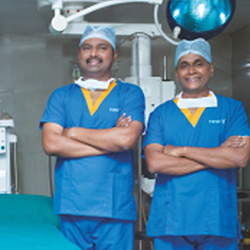Shoulder arthroscopy is performed by using a tiny camera attached to a thin tube called an arthroscope to examine or repair the tissues inside or around your shoulder joint. The arthroscope is inserted through a small incision (about 1 centimeter) in your skin. Through other small incisions, small specialized instruments are inserted to repair the tissues.
It is a commonly done procedure with excellent results in terms of pain, wound healing and early rehabilitation. While there are a large number of indications to perform arthroscopic shoulder surgery, a few common ones are enumerated below
- 1. Recurrent shoulder dislocation
- 2. SLAP tears (superior labral tears)
- 3. Stiff or “frozen†shoulder
- 4. Synovitis e.g. rheumatoid arthritis, infections etc
- 5. Bursitis
- 6. Biceps tendonitis
- 7. Impingement syndrome
- 8. Acromioclavicular joint arthritis
Surgery
It is a usually a day care procedure done under general anaesthesia in beach chair position. The procedure consists of making tiny incisions into the joint. After the diagnosis is confirmed by arthroscopic inspection, various instruments are inserted through the same incisions or separate ones.
Post-surgery
After the surgery, the wound is covered with a small dressing and bandage. You are usually discharged in the evening. Exercises help the shoulder in getting strong and improve the ability of motion. The doctor and the physiotherapist will suggest the necessary exercises as per the condition treated.














